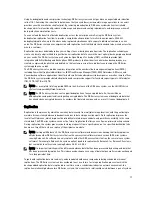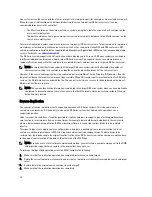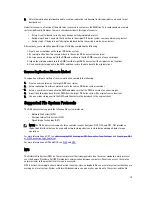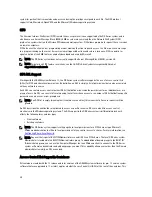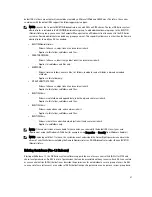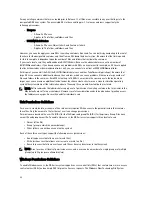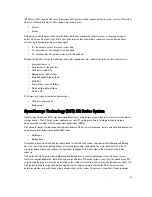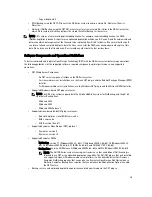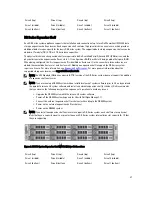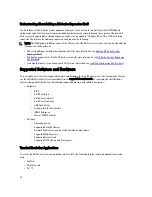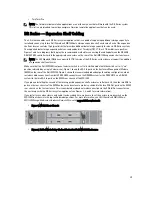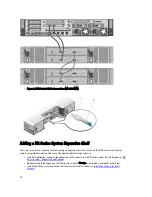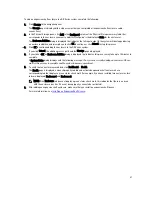
Using its deduplication and compression technology, DR Series systems can help achieve an expected data reduction
ratio of 15:1. Achieving this reduction in data means that you need fewer incremental storage operations to run and it
provides you with a smaller backup footprint. By removing redundant data, DR Series systems deliver fast reliable
backup and restore functionality, reduce media usage and power and cooling requirements, and improve your overall
data protection and retention costs.
You can extend the benefits of data deduplication across the enterprise as well–using the DR Series system
deduplication replication function–to provide a complete backup solution for multi-site environments. With 32:1
deduplicated replication, up to 32 nodes can be replicated simultaneously to separate, individual containers on one
node. The DR Series systems use compression with replication to shrink the data that is needed to be moved across the
wire to a container.
Replication can be scheduled based on your settings to occur during non-peak periods. The replication schedule you
create can be set and prioritized to ingest data over replication data to ensure the most optimal back up windows based
on your needs. The DR Series systems are Symantec OpenStorage Technology (OST) certified to provide tight
integration with its NetBackup and Backup Exec DMA products to allow them to control when backup images are
created, compressed, duplicated, and deleted, so that customers using these products can leverage the DR Series
system appliance as a disk.
The DR Series systems also provide seamless integration with a number of data management applications (DMA),
including CommVault replicated disk libraries, IBM Tivoli Storage Manager (TSM), EMC Networker, ARCserve, and
Veeam backup software applications. Ideal for both small-sized and medium-sized companies as well as remote offices,
the DR Series system provides data deduplication and compression support for four data capacity points: 35 Terabytes
(TB), 70 TB, 130 TB, or 270 TB.
NOTE: For a complete list of supported DMAs in the 2.0 release of the DR Series system, see the
Dell DR Series
System Interoperability Guide
for details.
NOTE: The DR Series system does not support deduplication of any encrypted data. So, there will be no
deduplication savings derived from ingesting encrypted data. The DR Series system cannot deduplicate data that
has already been encrypted because it considers that data to be unique, and as a result, it cannot deduplicate it.
Replication
Replication is the process by which the same key data is saved from multiple storage locations, with the goal being to
maintain its consistency between redundant resources in data storage environments. Data replication improves the
level of fault-tolerance, which improves the reliability of maintaining saved data, and permits accessibility to the same
stored data. The DR Series system uses an active form of replication that lets you configure a primary-backup scheme.
During replication, the system processes data storage requests from a specified source to a specified destination (also
known as a target) that acts as a replica of the original source data.
NOTE: Starting with Release 2.0, the DR Series system software includes version checking that limits replication
only between other DR Series systems that run the same system software release version (DR Series systems
running Release 2.0.x software can only replicate with other DR Series systems that run the same release system
software). For example, Release 2.0.x systems will not be able to replicate with Release 2.1 or Release 3.0 systems,
but can replicate with systems running Release 2.0.0.1 or 2.0.0.2.
NOTE: It is important to distinguish the difference between data that has been processed by backup, and data that
has been processed by replication. This is because backup saves a copy of data that generally remains unchanged
for a long period of time.
Targets with replication data are read-only, and are updated with new or unique data during scheduled or manual
replications. The DR Series system can be considered to act as a form of a storage replication process in which the
backup and deduplication data is replicated in real-time or via a scheduled window in a network environment. In a
replication relationship between two DR Series systems, this means that a relationship exists between a pair of systems.
17
Содержание PowerVault DX6112
Страница 1: ...Dell DR Series System Administrator Guide ...
Страница 32: ...32 ...
Страница 70: ...70 ...
Страница 86: ...86 ...
Страница 100: ...For more information on Replication schedules see Creating a Replication Schedule 100 ...
Страница 114: ...114 ...















